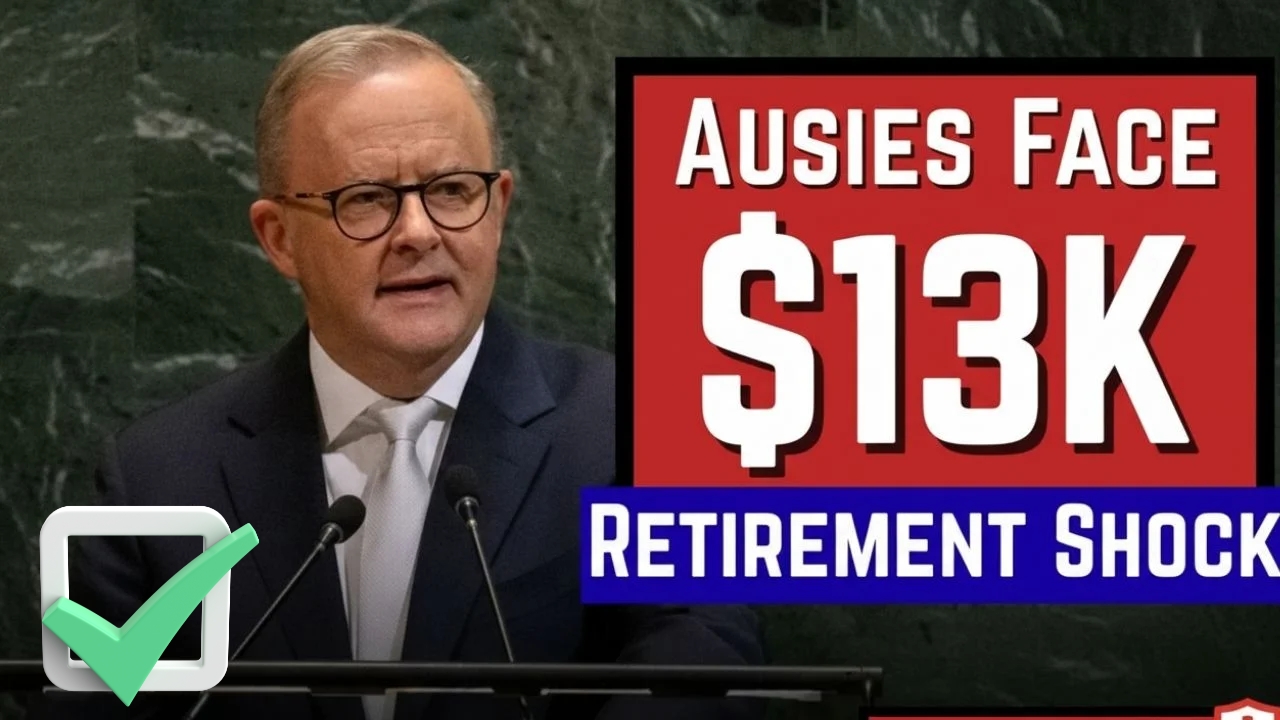Retirement has always been one of those stages of life that people look forward to—time for travel, hobbies, family, and maybe a bit of well-earned rest. But in 2025, the picture is looking a little more complicated for Australians. Why? Because the cost of living in retirement has just taken a noticeable jump, with reports showing an annual increase of around $13,000 compared to previous years. That’s not a minor bump—it’s a big shift that’s making a lot of people sit up and rethink their retirement plans.
Now, let’s unpack what this means in plain terms. The Association of Superannuation Funds of Australia (ASFA) regularly releases figures about the cost of a “comfortable” retirement. These aren’t about luxury lifestyles with yachts and champagne every weekend. Instead, they’re about living securely, enjoying some leisure activities, keeping up with essentials, and not having to pinch pennies at every turn.
In 2025, ASFA’s new figures have startled many retirees and soon-to-be retirees. The data suggests that a couple aiming for a “comfortable” retirement now needs around $80,000 a year, while singles are looking at more than $57,000 annually. When you compare that to last year, it’s roughly $13,000 higher across the board. Honestly, that kind of increase is enough to throw even the most careful retirement budgets into chaos.
Why the Sudden Jump?
You’re probably wondering—what exactly is driving this sharp rise? It’s not one single factor; it’s a mix.
- Inflation Stubbornness: Even though the Reserve Bank has tried to bring inflation under control, everyday essentials haven’t really come down in price. Groceries, utilities, and fuel still feel like they’re creeping higher.
- Healthcare Expenses: Medical costs are a huge part of retirement budgets. With health insurance premiums climbing and out-of-pocket expenses rising, retirees are seeing bigger bills.
- Housing Pressures: Even for those who own their homes outright, rates, maintenance, and insurance costs have been soaring. For retirees still renting, it’s an even tougher story.
- Lifestyle Expectations: On the flip side, Australians are living longer and more active retirements. That means more spending on travel, fitness, and social activities—things that are wonderful but undeniably pricey.
What Does “Comfortable Retirement” Really Mean?
Let’s be honest—“comfortable” can sound vague. ASFA’s definition includes things like:
- Being able to run a car
- Eating out occasionally
- Taking a yearly domestic holiday and maybe an international trip every few years
- Having private health insurance
- Affording home improvements or replacing appliances when needed
In other words, it’s not about extravagance, but it is about living with dignity and choice.
But here’s the kicker: if costs keep rising like this, the comfortable lifestyle many Australians dream of could become increasingly difficult to reach without solid planning and, let’s face it, a sizeable superannuation balance.
Who Will Feel It the Most?
Retirees already living on fixed incomes—especially those relying primarily on the Age Pension—will feel this pinch hardest. The pension simply doesn’t stretch to match these new “comfortable” retirement figures. Even middle-income retirees with modest super balances may find themselves recalculating budgets.
Singles, in particular, are more vulnerable, as they don’t have the shared expenses advantage that couples do. That extra $13,000 isn’t evenly distributed—it feels a lot heavier when you’re managing everything solo.
Can Retirees Do Anything About It?
It’s not all doom and gloom, to be fair. There are practical steps retirees and soon-to-be retirees can take:
- Review Super Strategies: Even in retirement, how you draw down your super matters. Getting financial advice can make a difference.
- Tap Into Government Support: Seniors Cards, healthcare concessions, and energy rebates can all shave off some costs.
- Downsizing: Some retirees are considering selling larger homes to free up equity and reduce living expenses.
- Smart Budgeting: Tracking expenses, cutting back on discretionary items, and using comparison sites for insurance or utilities might sound small, but together they help.
And while no one loves the idea of cutting back, it’s sometimes about adjusting expectations slightly without giving up on the joys of retirement altogether.
The Bigger Picture
This $13,000 increase is more than just a financial figure—it’s a reminder of how fragile retirement planning can be in a shifting economy. Australians are living longer, healthier lives, which is something to celebrate. But that also means more years of funding retirement, more healthcare costs, and more exposure to inflation.
The reality is, retirement planning isn’t just a “set and forget” thing anymore. It’s becoming an ongoing process that demands flexibility, regular review, and sometimes, tough decisions.
So, can Australians still look forward to a fulfilling retirement in 2025 and beyond? Absolutely. But it might require more planning, more conversations about money, and maybe even adjusting what “comfortable” really looks like.
If you’re nearing retirement, the takeaway here is simple: stay informed, get advice, and be prepared for costs that don’t stand still. Because, honestly, the one certainty in retirement planning right now is that the numbers will keep changing.
FAQs
Q1: How much has retirement costs increased in 2025?
Retirement costs have risen by about $13,000 annually compared to 2024 figures.
Q2: What is considered a comfortable retirement income for couples?
In 2025, couples need around $80,000 per year to live comfortably.
Q3: Why have retirement costs gone up so much?
Rising healthcare, housing, utilities, and everyday living costs are the main drivers.
Q4: Can the Age Pension cover comfortable retirement costs?
No, the Age Pension falls short of the ASFA’s “comfortable” retirement standards.
Q5: What can retirees do to manage higher costs?
Options include budgeting, reviewing superannuation strategies, using concessions, and considering downsizing.




